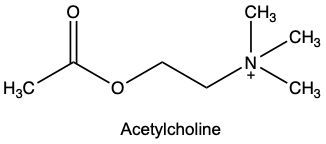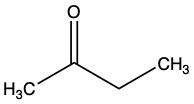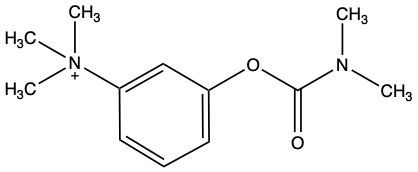Now, when it comes to enzyme inhibition, we're going to say that inhibition itself decreases catalyzed reaction rates. And we're going to say that the inhibitor itself is a small molecule or ion that binds to the enzyme and interferes with its activity. Now the characteristics of inhibition, we can talk about it in terms of competitive versus noncompetitive and reversible versus irreversible. Now in competitive inhibition, we're going to say the inhibitor binds to the active site of the enzyme. It's going to block that active site from the substrate, so it can't come in. Noncompetitive inhibition means that the inhibitor binds to a non-active site, so like an allosteric site. And then we're going to say reversible. Well, reversible means that the enzyme can regain or enzyme regains its activity or can regain its activity. Irreversible means that we have a permanent loss of enzyme activity. So these are the different types of inhibitions that overall will hurt or decrease in enzymes' effectiveness and activity.
- 1. Matter and Measurements4h 29m
- What is Chemistry?5m
- The Scientific Method9m
- Classification of Matter16m
- States of Matter8m
- Physical & Chemical Changes19m
- Chemical Properties8m
- Physical Properties5m
- Intensive vs. Extensive Properties13m
- Temperature (Simplified)9m
- Scientific Notation13m
- SI Units (Simplified)5m
- Metric Prefixes24m
- Significant Figures (Simplified)11m
- Significant Figures: Precision in Measurements7m
- Significant Figures: In Calculations19m
- Conversion Factors (Simplified)15m
- Dimensional Analysis22m
- Density12m
- Specific Gravity9m
- Density of Geometric Objects19m
- Density of Non-Geometric Objects9m
- 2. Atoms and the Periodic Table5h 23m
- The Atom (Simplified)9m
- Subatomic Particles (Simplified)12m
- Isotopes17m
- Ions (Simplified)22m
- Atomic Mass (Simplified)17m
- Atomic Mass (Conceptual)12m
- Periodic Table: Element Symbols6m
- Periodic Table: Classifications11m
- Periodic Table: Group Names8m
- Periodic Table: Representative Elements & Transition Metals7m
- Periodic Table: Elemental Forms (Simplified)6m
- Periodic Table: Phases (Simplified)8m
- Law of Definite Proportions9m
- Atomic Theory9m
- Rutherford Gold Foil Experiment9m
- Wavelength and Frequency (Simplified)5m
- Electromagnetic Spectrum (Simplified)11m
- Bohr Model (Simplified)9m
- Emission Spectrum (Simplified)3m
- Electronic Structure4m
- Electronic Structure: Shells5m
- Electronic Structure: Subshells4m
- Electronic Structure: Orbitals11m
- Electronic Structure: Electron Spin3m
- Electronic Structure: Number of Electrons4m
- The Electron Configuration (Simplified)22m
- Electron Arrangements5m
- The Electron Configuration: Condensed4m
- The Electron Configuration: Exceptions (Simplified)12m
- Ions and the Octet Rule9m
- Ions and the Octet Rule (Simplified)8m
- Valence Electrons of Elements (Simplified)5m
- Lewis Dot Symbols (Simplified)7m
- Periodic Trend: Metallic Character4m
- Periodic Trend: Atomic Radius (Simplified)7m
- 3. Ionic Compounds2h 18m
- Periodic Table: Main Group Element Charges12m
- Periodic Table: Transition Metal Charges6m
- Periodic Trend: Ionic Radius (Simplified)5m
- Periodic Trend: Ranking Ionic Radii8m
- Periodic Trend: Ionization Energy (Simplified)9m
- Periodic Trend: Electron Affinity (Simplified)8m
- Ionic Bonding6m
- Naming Monoatomic Cations6m
- Naming Monoatomic Anions5m
- Polyatomic Ions25m
- Naming Ionic Compounds11m
- Writing Formula Units of Ionic Compounds7m
- Naming Ionic Hydrates6m
- Naming Acids18m
- 4. Molecular Compounds2h 18m
- Covalent Bonds6m
- Naming Binary Molecular Compounds6m
- Molecular Models4m
- Bonding Preferences6m
- Lewis Dot Structures: Neutral Compounds (Simplified)8m
- Multiple Bonds4m
- Multiple Bonds (Simplified)6m
- Lewis Dot Structures: Multiple Bonds10m
- Lewis Dot Structures: Ions (Simplified)8m
- Lewis Dot Structures: Exceptions (Simplified)12m
- Resonance Structures (Simplified)5m
- Valence Shell Electron Pair Repulsion Theory (Simplified)4m
- Electron Geometry (Simplified)8m
- Molecular Geometry (Simplified)11m
- Bond Angles (Simplified)11m
- Dipole Moment (Simplified)15m
- Molecular Polarity (Simplified)7m
- 5. Classification & Balancing of Chemical Reactions3h 17m
- Chemical Reaction: Chemical Change5m
- Law of Conservation of Mass5m
- Balancing Chemical Equations (Simplified)13m
- Solubility Rules16m
- Molecular Equations18m
- Types of Chemical Reactions12m
- Complete Ionic Equations18m
- Calculate Oxidation Numbers15m
- Redox Reactions17m
- Spontaneous Redox Reactions8m
- Balancing Redox Reactions: Acidic Solutions17m
- Balancing Redox Reactions: Basic Solutions17m
- Balancing Redox Reactions (Simplified)13m
- Galvanic Cell (Simplified)16m
- 6. Chemical Reactions & Quantities2h 35m
- 7. Energy, Rate and Equilibrium3h 46m
- Nature of Energy6m
- First Law of Thermodynamics7m
- Endothermic & Exothermic Reactions7m
- Bond Energy14m
- Thermochemical Equations12m
- Heat Capacity19m
- Thermal Equilibrium (Simplified)8m
- Hess's Law23m
- Rate of Reaction11m
- Energy Diagrams12m
- Chemical Equilibrium7m
- The Equilibrium Constant14m
- Le Chatelier's Principle23m
- Solubility Product Constant (Ksp)17m
- Spontaneous Reaction10m
- Entropy (Simplified)9m
- Gibbs Free Energy (Simplified)18m
- 8. Gases, Liquids and Solids3h 25m
- Pressure Units6m
- Kinetic Molecular Theory14m
- The Ideal Gas Law18m
- The Ideal Gas Law Derivations13m
- The Ideal Gas Law Applications6m
- Chemistry Gas Laws16m
- Chemistry Gas Laws: Combined Gas Law12m
- Standard Temperature and Pressure14m
- Dalton's Law: Partial Pressure (Simplified)13m
- Gas Stoichiometry18m
- Intermolecular Forces (Simplified)19m
- Intermolecular Forces and Physical Properties11m
- Atomic, Ionic and Molecular Solids10m
- Heating and Cooling Curves30m
- 9. Solutions4h 10m
- Solutions6m
- Solubility and Intermolecular Forces18m
- Solutions: Mass Percent6m
- Percent Concentrations10m
- Molarity18m
- Osmolarity15m
- Parts per Million (ppm)13m
- Solubility: Temperature Effect8m
- Intro to Henry's Law4m
- Henry's Law Calculations12m
- Dilutions12m
- Solution Stoichiometry14m
- Electrolytes (Simplified)13m
- Equivalents11m
- Molality15m
- The Colligative Properties15m
- Boiling Point Elevation16m
- Freezing Point Depression9m
- Osmosis16m
- Osmotic Pressure9m
- 10. Acids and Bases3h 29m
- Acid-Base Introduction11m
- Arrhenius Acid and Base6m
- Bronsted Lowry Acid and Base18m
- Acid and Base Strength17m
- Ka and Kb12m
- The pH Scale19m
- Auto-Ionization9m
- pH of Strong Acids and Bases9m
- Acid-Base Equivalents14m
- Acid-Base Reactions7m
- Gas Evolution Equations (Simplified)6m
- Ionic Salts (Simplified)23m
- Buffers25m
- Henderson-Hasselbalch Equation16m
- Strong Acid Strong Base Titrations (Simplified)10m
- 11. Nuclear Chemistry56m
- BONUS: Lab Techniques and Procedures1h 38m
- BONUS: Mathematical Operations and Functions47m
- 12. Introduction to Organic Chemistry1h 34m
- 13. Alkenes, Alkynes, and Aromatic Compounds2h 12m
- 14. Compounds with Oxygen or Sulfur1h 6m
- 15. Aldehydes and Ketones1h 1m
- 16. Carboxylic Acids and Their Derivatives1h 11m
- 17. Amines38m
- 18. Amino Acids and Proteins1h 51m
- 19. Enzymes1h 37m
- 20. Carbohydrates1h 46m
- Intro to Carbohydrates4m
- Classification of Carbohydrates4m
- Fischer Projections4m
- Enantiomers vs Diastereomers8m
- D vs L Enantiomers8m
- Cyclic Hemiacetals8m
- Intro to Haworth Projections4m
- Cyclic Structures of Monosaccharides11m
- Mutarotation4m
- Reduction of Monosaccharides10m
- Oxidation of Monosaccharides7m
- Glycosidic Linkage14m
- Disaccharides7m
- Polysaccharides7m
- 21. The Generation of Biochemical Energy2h 8m
- 22. Carbohydrate Metabolism2h 22m
- 23. Lipids2h 26m
- Intro to Lipids6m
- Fatty Acids25m
- Physical Properties of Fatty Acids6m
- Waxes4m
- Triacylglycerols12m
- Triacylglycerol Reactions: Hydrogenation8m
- Triacylglycerol Reactions: Hydrolysis13m
- Triacylglycerol Reactions: Oxidation7m
- Glycerophospholipids15m
- Sphingomyelins13m
- Steroids15m
- Cell Membranes7m
- Membrane Transport10m
- 24. Lipid Metabolism1h 45m
- 25. Protein and Amino Acid Metabolism1h 37m
- 26. Nucleic Acids and Protein Synthesis2h 54m
- Intro to Nucleic Acids4m
- Nitrogenous Bases16m
- Nucleoside and Nucleotide Formation9m
- Naming Nucleosides and Nucleotides13m
- Phosphodiester Bond Formation7m
- Primary Structure of Nucleic Acids11m
- Base Pairing10m
- DNA Double Helix6m
- Intro to DNA Replication20m
- Steps of DNA Replication11m
- Types of RNA10m
- Overview of Protein Synthesis4m
- Transcription: mRNA Synthesis9m
- Processing of pre-mRNA5m
- The Genetic Code6m
- Introduction to Translation7m
- Translation: Protein Synthesis18m
Enzyme Inhibition - Online Tutor, Practice Problems & Exam Prep
 Created using AI
Created using AIEnzyme inhibition reduces reaction rates through small molecules or ions that bind to enzymes. In competitive inhibition, the inhibitor occupies the active site, blocking substrate access, while in noncompetitive inhibition, it binds elsewhere, altering the enzyme's shape. Reversible inhibition allows enzyme activity to be restored, whereas irreversible inhibition leads to permanent loss. Examples include ibuprofen for competitive inhibition and heavy metals for noncompetitive. Understanding these mechanisms is crucial for grasping enzyme functionality and metabolic pathways.
Enzyme Inhibition Concept 1
Video transcript
Enzyme Inhibition Concept 2
Video transcript
So in this video, we're going to take a look at the different types of inhibition: Competitive versus noncompetitive, reversible versus irreversible. So if we take a look at the first one, we're going to say we have reversible competitive inhibition. Here we have our substrate, and within the active site of our enzyme, we have the inhibitor in place. Now, here we're going to say that the inhibitor is similar in shape and size to the substrate. So it can take up the active site instead of the substrate. A great example of this is Ibuprofen. Now, what's the interaction here? Well, here this would be a non-covalent interaction between the inhibitor and the enzyme at the active site. And what is the effect? Well, the effect we can see is that it's taking up that active site position, so it's blocking it from the substrate. And how do we reverse this effect? How could we get that inhibitor to not get in the way of our substrate? Well, increasing the concentration of our substrate would help to lower the effect of this inhibitor.
Now, reversible noncompetitive. Here, we have our active site, we have our substrate, and then down here we have our inhibitor. It attached somewhere else that is not the active site. So here we're going to say that when it comes to the inhibitor, it does not resemble the substrate's shape because it's not binding to the active site where the substrate would go. A great example of this are heavy metals. Now here this is also non-covalent in terms of interaction, but now it's at the non-active site. Here, we're going to say it causes a shape change in the enzyme and in the active site. But by the enzyme, the inhibitor attaching itself to this part down here, which is not the active site, it's actually going to cause a shift or change in the shape of this active site. It changes shape so the substrate can no longer attach effectively to the enzyme. Here, we're going to say, how could we reverse this effect? Well, we have to use special types of agents. They would have to bind to the inhibitor so that they cannot bind to the non-active site and change the active site of the enzyme.
Finally, we have irreversible. Here we have our substrate, we have our enzyme, and the inhibitor has attached to the active site. Here we would say that when it comes to the inhibitor, it does not resemble the substrate's shape. In this case, we could talk about poisons and different types of venoms belonging to this type of inhibition. Now, here we're going to say we have a covalent interaction with our group within the active site. And we're going to say here that the effect is it blocks the active site. The inhibitor is attaching itself to that active site. And here the inhibition is permanent. So this can do some long-lasting damage and effects in terms of irreversible inhibition. So we've talked about the different types of inhibition, remember, competitive versus noncompetitive, reversible versus irreversible.
Enzyme Inhibition Example 1
Video transcript
Here in this example question, it says, match each type of inhibition with the correct statement. So a is reversible competitive, b is reversible noncompetitive, and c is irreversible. The first one says, inhibitor decreases enzyme activity by binding at a site other than the active site. Well, remember, in our different types of inhibition that we covered, we'd say that the reversible noncompetitive is the only one that has the inhibitor binding to a site that is not the active site. So first, it's going to be B. Next, the formation of strong covalent bond leads to permanent loss of enzyme activity. So, remember, when it comes to irreversible inhibition, it's the covalent of the R groups that are binding to the active site. Also, it says permanent. Remember, the effect here is permanent when it comes to irreversible. So this would be C. Next, the substrate is unable to bind with the active site due to a change in enzyme structure. Alright. So for this one, they're talking about the active site changing form. This happens when the inhibitor attaches to the nonactive site. It causes what we call a conformational change in our active site. The shape changes so the substrate can no longer effectively attach to it. This happens with reversible noncompetitive inhibition. Next, an increase in the concentration of substrate increases the reaction rate. We said that the reversible competitive inhibition, its effects can be reversed if we increase the amount of substrate. This is going to put the inhibitor at a disadvantage where it won't be able to effectively bind to the active site. So here, this would be A. So we'd say that the statements would be B, C, B, and A for this particular example question.
Which of the following inhibitors could be a reversible competitive inhibitor for acetylcholinesterase if its substrate is acetylcholine?
Do you want more practice?
Here’s what students ask on this topic:
What is the difference between competitive and noncompetitive enzyme inhibition?
Competitive inhibition occurs when an inhibitor binds to the active site of an enzyme, preventing the substrate from binding. The inhibitor often resembles the substrate in shape and size. This type of inhibition can be overcome by increasing the concentration of the substrate. Noncompetitive inhibition, on the other hand, involves the inhibitor binding to a site other than the active site, known as an allosteric site. This binding changes the enzyme's shape, making the active site less effective or inaccessible to the substrate. Noncompetitive inhibition cannot be overcome by simply increasing substrate concentration.
 Created using AI
Created using AIHow does reversible enzyme inhibition differ from irreversible enzyme inhibition?
Reversible enzyme inhibition is characterized by the temporary binding of an inhibitor to an enzyme, allowing the enzyme to regain its activity once the inhibitor is removed. This type of inhibition often involves non-covalent interactions. Irreversible enzyme inhibition, however, involves the permanent binding of an inhibitor to an enzyme, usually through covalent bonds. This leads to a permanent loss of enzyme activity. Examples of irreversible inhibitors include certain poisons and venoms.
 Created using AI
Created using AICan you provide examples of competitive and noncompetitive inhibitors?
Yes, a common example of a competitive inhibitor is ibuprofen, which competes with the substrate for the active site of the enzyme. For noncompetitive inhibitors, heavy metals like lead and mercury are good examples. These metals bind to sites other than the active site, causing a change in the enzyme's shape and reducing its activity.
 Created using AI
Created using AIWhat are the effects of enzyme inhibition on metabolic pathways?
Enzyme inhibition can significantly impact metabolic pathways by reducing the rate of enzyme-catalyzed reactions. Competitive inhibition can be overcome by increasing substrate concentration, allowing the pathway to continue. Noncompetitive inhibition, however, alters the enzyme's shape, making it less effective regardless of substrate concentration. Irreversible inhibition can permanently shut down a pathway, leading to potential cellular damage or death. Understanding these effects is crucial for drug development and disease treatment.
 Created using AI
Created using AIHow can the effects of reversible competitive inhibition be reversed?
The effects of reversible competitive inhibition can be reversed by increasing the concentration of the substrate. Since the inhibitor competes with the substrate for the active site, a higher substrate concentration increases the likelihood that the substrate will bind to the active site instead of the inhibitor. This effectively reduces the impact of the inhibitor on the enzyme's activity.
 Created using AI
Created using AIYour GOB Chemistry tutor
- How can you distinguish between a competitive inhibitor and an uncompetitive inhibitor experimentally?
- Why are irreversible enzyme inhibitors referred to as poisons?
- The text discusses three forms of enzyme inhibition: uncompetitive inhibition, competitive inhibition, and irr...
- What kind of inhibition (uncompetitive, competitive, or irreversible) is present in each of the following:a. P...
- What kind of inhibition (uncompetitive, competitive, or irreversible) is present in each of the following:c. T...
- One mechanism by which lead exerts its poisonous effect on enzymes can be stopped by chelation therapy with ED...
- What kind of reaction product might be a competitive inhibitor for the enzyme that catalyzes its formation?
- Explain how the following changes affect the rate of an enzyme-catalyzed reaction in the presence of an uncomp...
- Explain how the following changes affect the rate of an enzyme-catalyzed reaction in the presence of an uncomp...
- What type of enzyme regulation occurs in the following situations?d. Conversion of isocitrate to α-ketoglutara...
- Indicate whether each of the following statements describes primary, secondary, tertiary, or quaternary protei...
- Indicate whether each of the following describes a competitive or a noncompetitive enzyme inhibitor:d. The str...
- Methanol and ethanol are oxidized by alcohol dehydrogenase. In methanol poisoning, ethanol is given intravenou...
- In humans, the antibiotic amoxicillin (a type of penicillin) is used to treat certain bacterial infections.a. ...
- Oxaloacetate is an inhibitor of succinate dehydrogenase. <IMAGE> a. Would you expect oxaloacetate to be ...
- In humans, the antibiotic amoxicillin (a type of penicillin) is used to treat certain bacterial infections.c. ...
- Ethylene glycol (HO—CH₂—CH₂—OH) is a major component of antifreeze. If ingested, it is first converted to HOOC...
- Indicate whether each of the following describes a competitive or a noncompetitive inhibitor.a. The structure ...
- Indicate whether each of the following describes a competitive or a noncompetitive inhibitor.c. The inhibitor ...




